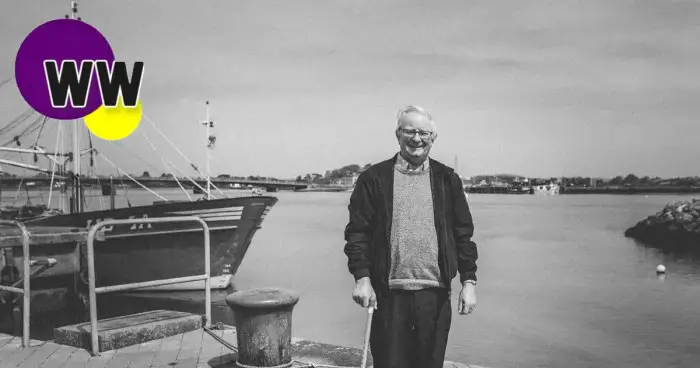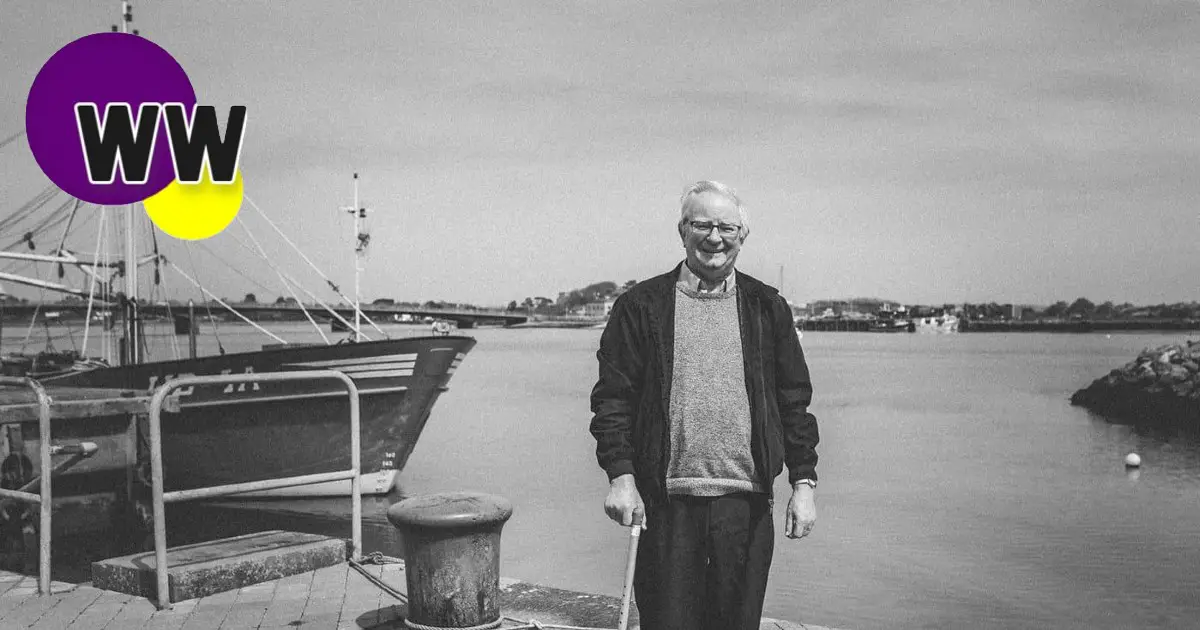
Joe Moloney, Snr. began his printing career at the old Free Press in 1960 at the age of fourteen. Over sixty years later, he is sitting down with Wexford Weekly to give us his story and a short history of Wexford printing…
The year is 1960 and a fourteen-year-old Joe Moloney, Snr. is knocking the side door of the old Free Press building on South Main Street, Wexford Town. He is about to embark on his first day of an apprenticeship that meant both secure employment and very hard work. This day would prove pivotal in his life, as it marked the beginning of a long-lasting career. He is about to be introduced to the world of printing.
“I’ll never forget opening the door to the works. You were hit with a blast of sound that never ever left me. Nor did the smell of the oil, the white spirits, the whoosh of the machines, the smell of pulp, the smell of paper. The workers shouting at each other across the machines. It was all go…”
Fast forward sixty-four years later, Joe Moloney, Snr. is sitting down with a Wexford Weekly columnist as he recalls his long and fruitful printing career. In doing so, Moloney chronicles the ‘hot metal days’ of printing before the ‘advent of technology’.
“The formation of the Free Press occurred in the late 1870s-1880s. It was based on South Main Street, Wexford Town. Practically opposite Heffernan’s bar. It ran the length of the Cinema Palace right down to where there was a garage. So, it was two thirds of Cinema Lane we took up. Not to mistake it with the (modern) Wexford Free Press which in itself is a unique little one which I helped form. It has its own uniqueness about it and it follows the traits that I love in a free newspaper. The old photographs, the old tales.”
Talking us through his first day of work, Moloney fondly recalled the old ways of printing. With no modern technology at their disposal, printers followed a precise and often gruelling procedure of manually hand setting each individual letter.
“A chap was appointed to show me the ropes on what we called a cinema poster. A Cinema Palace poster that was hung up around the town every weekend for next week’s films. It was all hand set. There was nothing that was done by technology. This was all old hand set type like you see in the old black and white westerns. Every name, every comma, was all hand set.
It was done from a box with layers. Deep boxes within a box that you’d have your letters in. Usually, the lower case was all on one side and the capital letters and the numbers were on the right-hand side. They were a type of cast iron. Brittle enough if you dropped something on it. Say for example, you dropped metal on metal, those letters were gone. You’d have to either order a new one or go somewhere else in the works and do it in a different font.
Where typesetting was concerned, the hot metal was a system where you bought in new metal. We had a big pot out in the shed run by gas underneath. You’d light the gas underneath and put in all your metal and it melted it. And that melt had to be brought in and fed into a pot and you sat at a linotype, as it was called at the time. You were typesetting and your hand would be going quick as a flash. With newspaper work, you had to be fast. We were on a deadline and that was it.
We had two model 1 linotypes. Now they were rare. We had a model 4 and we had a model 48 which was the most recent. The model 48, everyone wanted to work that but there was a fella appointed to it and he was the boss man over that. You always hoped you weren’t put onto the model 1 because they were held together with miraculous metals and string.”
Workplace health regulations weren’t what they are today. Injuries could be serious and job threatening.
“At that time, if your fingers start to split after two or three weeks in the printing trade as a ‘compositor’. That was the official name – a compositor. If your fingers split and water came out it was like a type of dermatitis. That’s from the dust that was on the letters. If that came out, you were in danger of losing your job because this could be a nasty type of thing. I got it after about three weeks. And I hid it. I used to go up and down to the old tap we had just outside the works and washed the hands. Put a drop of white spirits just to sting the hell out of it, you know. Eventually, the fingers toughened up thank God and I was happy enough.”
Technology was limited and nothing like the virtually-connected world of today.
“There was no such thing as pens or computers or phones or anything like that connected with the print trade in the 1960’s. The only phone you had was in the reporter’s office or the editor’s office and they were just calls coming in about this that or the other.”
Despite the often-tough nature of the job, Moloney quickly discovered he had a passion for printing that still burns brightly in him to this day. He particularly enjoyed hand setting the cinema posters.
“I was often envious of the People newspaper at that time because they used to do the Abbey Cinema and the Capitol Cinema posters. We just did the Cinema Palace because we were adjacent to it. I loved doing the cinema posters.
I love to see hand setting on a wall or on a pole. If you go down to Bugler Doyle’s pub, on the way to the toilets, you will see the last of my work for the Cinema Palace before it closed down. There’s two or three of them hanging on the wall there.”
In the coming decades, the printing industry completely transformed. Advancements in offset printing allow for millions of newspapers to be printed daily all over the world using high-tech machinery. The dawn of digital media also created a brand-new medium for news material. While print media remains popular, countless people now opt to get their news virtually, as you are by reading this right now.
Despite the benefits of these modern advancements, Moloney understandably misses the printing days of old.
“Personally, I found it hard to accept new technology because with the old style, you needed a bit of craft. You needed the years of apprenticeship. And you needed good fellas around you.”
Read also:
Remember to submit your news to Wexford Weekly! To advertise on our socials or website, email our team at info@wexfordweekly.com



